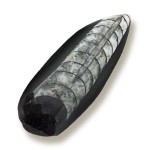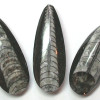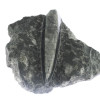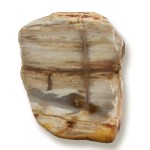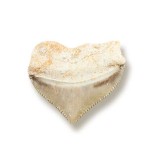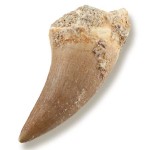Product Description
FOUND IN: NORTH AMERICA, EUROPE, NORTH AFRICA, AUSTRALASIA.
Orthoceras was an ancient mollusk that lived more than 400 million years ago. The name means straight horn, referring to the characteristic long, straight, conical shell. The preserved shell is all that remains of this ancestor of our modern-day squid.
The soft body lived in the last open-ended segment at the large end of the conical shell. As the body grew and the housing segment became too small, a dividing wall, called the septa, grew to separate the old “home chamber” from the new one. The differences in the composition of these shell parts allowed for differences in fossilization so the parts can be seen.
The siphuncle is a tube that runs the entire length of the shell, through each of the chambers. This tube had two functions. Once filled with water, the nautiloid could force the water out, propelling itself backward with a kind of jet propulsion. By releasing the water and leaving air space, the tube could serve as a bouyancy device allowing the animal to rise and lower itself to different depths.
These straight shelled nautiloids ranged in size from less than a centimeter to more than 14 feet long!
All the living relatives of these nautiloids, squid, octopus, cuttlefish, and nautilus are predators, and we can assume that orthoceras was also a hunter of the Paleozoic seas, possibly having trilobites for breakfast!
Notice the siphuncle and septa in the fossil below. The siphuncle is the line running down the center from head to tail. The septa are the short curved lines that run across or side to side.
CLASSIFICATION:
Kingdom: Animalia
Phylum: Mollusca
Class: Cephalopoda
Subclass: Nautilodea
Order: Orthocerida
Family: Orthoceratidae
Genus: Orthoceras
Species: Orthoceras regulare

